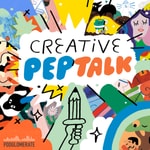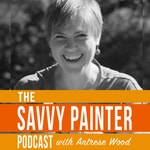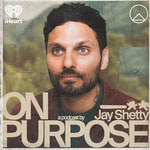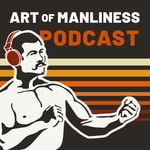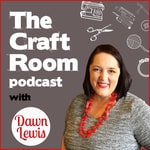(NOT) A Real Artist – Détails, épisodes et analyse
Détails du podcast
Informations techniques et générales issues du flux RSS du podcast.
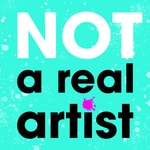
(NOT) A Real Artist
Tamara Sagathevan, Iris Fritschi-Cussens
Fréquence : 1 épisode/34j. Total Éps: 24

Hosted on Acast. See acast.com/privacy for more information.
Classements récents
Dernières positions dans les classements Apple Podcasts et Spotify.
Apple Podcasts
🇨🇦 Canada - visualArts
16/07/2025#93🇨🇦 Canada - visualArts
15/07/2025#66🇨🇦 Canada - visualArts
12/05/2025#83🇨🇦 Canada - visualArts
11/05/2025#64🇨🇦 Canada - visualArts
10/05/2025#51🇩🇪 Allemagne - visualArts
10/05/2025#93🇺🇸 États-Unis - visualArts
10/05/2025#94🇨🇦 Canada - visualArts
09/05/2025#16🇩🇪 Allemagne - visualArts
09/05/2025#77🇺🇸 États-Unis - visualArts
09/05/2025#61
Spotify
Aucun classement récent disponible
Liens partagés entre épisodes et podcasts
Liens présents dans les descriptions d'épisodes et autres podcasts les utilisant également.
See all- https://vimeo.com/85040589
40 partages
- https://iris-impressions.com/
23 partages
- https://www.ruskea.com/
22 partages
- https://www.instagram.com/ruskea_art
40 partages
- https://www.instagram.com/inspiredtowrite
21 partages
Qualité et score du flux RSS
Évaluation technique de la qualité et de la structure du flux RSS.
See allScore global : 89%
Historique des publications
Répartition mensuelle des publications d'épisodes au fil des années.
EP22: What's Cooking, Creatively
Saison 4 · Épisode 22
samedi 29 juin 2024 • Durée 47:20
In episode 22 we talk about all the ways in which we have been creative recently, and explore what it means to engage in different artforms and how it relates to our creativity as a whole.
Key Takeaways
- We usually paint to express our creativity; therefore, it can sometimes feel like anything that is not painting, isn’t necessarily creative, or has no common thread with our main creative practice.
- You will find that you’re the common thread! You are the thing that connects all your expressions of creativity whether visual or not.
- Creativity can also look like; cooking with new ingredients or trying new recipes, running a fantasy RPG game, learning new subjects, making bracelets and comics.
- Your additional creative pursuits don’t have to be healing, and if it does feel like it is therapeutic, that is a happy bonus!
- Whether your final creative outcomes are enjoyed just by you, or an audience (like your family), your creativity is meeting a need.
- We hypothesise that these needs are:
- Needing to feel connected and loved
- Needing to be seen or validating
- Needing to show up for self and not self-abandoning
Email us: [email protected] (you can let us know what you enjoyed, what your 'AHA' moments were, or any questions you'd like us to answer or topics you'd like us to discuss in a future episode)
Iris
Instagram: https://www.instagram.com/iris.impressions.art/
Tamara
Instagram: https://www.instagram.com/ruskea_art/
Hosted on Acast. See acast.com/privacy for more information.
EP21: People Pleasing
Saison 4 · Épisode 21
samedi 20 avril 2024 • Durée 44:50
In episode 21 we talk about people pleasing. We explore why we do it, what it means, the positive and negative sides to it and how to move towards having healthier boundaries in all areas of life.
Key Takeaways:
1. The term people pleasing; refers to all humans, that one may willingly do things for, at the expense of oneself.
2. The act of people pleasing is about controlling how others may view you, act towards you, and often generates resentment in the person doing the pleasing.
3. People pleasing can also come from an inherent sense of unworthiness. Therefore we feel we need to add value or become worthy people to combat that idea.
4. People pleasing can also be aided by the discomfort in setting boundaries and the expected or imagined conflict that that action may bring.
5. In art and in life, self-awareness and self-reflection are going to be the things that serve you in understanding:
a. Are you trying to control someone’s thoughts, feelings, or reaction?
b. Are you feeling resentful?
c. Is the need or want you’re anticipating true?
d. Is the urgency or danger you’re feeling to fulfil this perceived need real?
6. At the same time, we shouldn’t gaslight ourselves and deny:
a. We have cultural expectations, and a difference in in the philosophies we grow up with.
b. Our experiences are valid, and that the definition of danger or urgency depends on our situations.
7. People pandering and boundary work BOTH use energy:
a. However, people pleasing has a perpetual use of energy.
b. Whereas boundary work might have a larger investment at the start but a maintenance energy as time goes on.
8. The choice therefore lies with the individual, and which energy they feel costs them the least.
Enjoyed the podcast? Please rate, review & share it with anyone who might enjoy it or find it useful! Thank you for joining us!
Email us: [email protected] (you can let us know what you enjoyed, what your 'AHA' moments were, or any questions you'd like us to answer or topics you'd like us to discuss in a future episode)
Iris
Instagram: https://www.instagram.com/iris.impressions.art/
Tamara
Instagram: https://www.instagram.com/ruskea_art/
Hosted on Acast. See acast.com/privacy for more information.
EP12: Ask the Artists
Saison 2 · Épisode 12
samedi 15 avril 2023 • Durée 01:19:56
In episode 12 we answer all of your questions! Things listeners asked us about ranged from practical tips around art supplies, to requests for help with confidence and the inner critic, to how to develop your own style, to curiosity on how to make a podcast and lots more.
Mentioned in this episode:
The Gap by Ira Glass - https://vimeo.com/85040589
Tamara's Rubric: https://www.ruskea.com/post/art-swatch-rubric
This is the final episode of season 2. We'll be taking a short break and will be back mid 2023 with a brand new season in which we totally shake things up! We can't wait to share it with you soon.
Miss us and looking for something to do while you wait for season 3 to drop? Please rate, review & share (NOT) A Real Artist with anyone who might enjoy it or find it useful! Thank you for joining us!
Email us: [email protected] (you can let us know what you enjoyed, what your 'AHA' moments were, or any questions you'd like us to answer or topics you'd like us to discuss in a future episode)
Iris
Instagram: https://www.instagram.com/iris.impressions.art/
Tamara
Instagram: https://www.instagram.com/ruskea_art/
Hosted on Acast. See acast.com/privacy for more information.
EP11: The Lonely Artist
Saison 2 · Épisode 11
samedi 1 avril 2023 • Durée 44:05
In episode 11: we hear about how loneliness can appear in your art practice, what that may feel like and how to foster connection with other artists
Artists mentioned in this episode:
Honorata | Marieke Blokland | Miranda Meulenkamp |Tamara Laporte
Key takeaways:
- When talking about loneliness we could mistakenly conflate solitude with loneliness.
- Solitude is more self-imposed and good for growth, it feels like a choice, loneliness can sometimes be imposed by others, and often feels less like a choice.
- Sometimes the way we feel about people as a whole, is determined by the type of people we engage with and the environment in which we engage with them. As an example, we could feel we don’t like people, when we could just be meeting the wrong people, in the wrong format
- You don’t need to be with someone in person to engage with them meaningfully or connect.
- You can create and collaborate with others online, sometimes with more security or autonomy and comfort, than in person.
- A current feeling of loneliness could sometimes be a past loneliness that you’re re-experiencing, which is valid.
- Music, podcasts, body-doubling, and vlogs are effective ways of working with your loneliness in the studio or in life. It’s OK to need and use tools.
- When in an uncomfortable silence, feeling the compulsion to break it, you can ask, am I in this moment feeling a need to influence any thought this person might have of me? OR is it genuine yearning to connect?
- When we connect with other people or artists, we could start seeing things or ourselves through a different lens.
- When you have a fear of loneliness or a fear of hurting other people, you might come across a person who wants to engage with you, but does it in a way that violates boundaries or makes you feel uncomfortable.
- In that moment ask yourself: does this drain my energy, are we both getting a nett win from the interaction? Then choose your response time and whether you give attention to the interaction, as what you give attention grows. Remember that you cannot be everything to everyone
- Cultivate self-awareness around other people, so that you can go where friendship wants to blossom, at the same time, have some healthy confidence, that you are cool, and people DO want to meet with you.
- Loneliness and unworthiness can sometimes work hand in hand, and help each other self-fulfil
- So dear listeners, please remember you are worthy of love, of friendships, and cool art dates!
Enjoyed the podcast? Please rate, review & share it with anyone who might enjoy it or find it useful! Thank you for joining us!
Email us: [email protected] (you can let us know what you enjoyed, what your 'AHA' moments were, or any questions you'd like us to answer or topics you'd like us to discuss in a future episode)
Iris
Instagram: https://www.instagram.com/iris.impressions.art/
Tamara
Instagram: https://www.instagram.com/ruskea_art/
Hosted on Acast. See acast.com/privacy for more information.
EP10: Recovering Perfectionist
Saison 2 · Épisode 10
samedi 18 mars 2023 • Durée 57:32
In episode 10 we dig into perfectionism: how it affects us, why we hate it and how we kick it in the butt.
Key takeaways:
- Using the term recovering perfectionist as opposed to just perfectionist is a way of acknowledging your perfectionist self whilst also pointing to the work you are doing to change things
- Perfectionism can be used as an excuse to keep working on something for minimal return
- We can roughly divide perfectionism in two, on the one hand inward perfectionism: i.e. I need myself or what I do to be perfect. And outward perfectionism: i.e. I need what others are or do to be perfect
- If you experience a harsh inner perfectionist when working alone, try to collaborate with someone you like and respect and see if it helps lessen the feeling
- Often perfectionism is simply a protection against our fears. If you never start, you protect yourself against failure.
- Perfectionism and the inner critic are closely related. The former wants to make things perfect, the latter criticises what you’ve done. Both talk about a feeling of ‘not good enough’.
- When we compare ourselves to others or have an unattainable standard it can give rise to a feeling of ‘what’s the point’. But often it’s better to do something imperfectly than not do it at all. Showing up imperfectly is real and honest
- Let fun be your compass
- Can you try to actively be an anti-perfectionist? What rules can you break? What would that look like in your life and art?
- There is a tension point between what you want to be and what you are. You have to decide to what extent changing yourself or embracing yourself as you are is the right choice for you.
- If you keep putting in the work at a standard that is doable and sustainable to you, then in time the level you used to perceive as unattainable perfection will be the norm. You only grow by doing.
- There’s a difference between being proficient and being a perfectionist. Don’t let perfectionism stand in the way of learning and becoming proficient in your chosen field.
Enjoyed the podcast? Please rate, review & share it with anyone who might enjoy it or find it useful!
Thank you for joining us!
Email us: [email protected] (you can let us know what you enjoyed, what your 'AHA' moments were, or any questions you'd like us to answer or topics you'd like us to discuss in a future episode)
Iris
Website: https://iris-impressions.com/
Instagram: https://www.instagram.com/iris.impressions.art/
Tamara
Website: https://www.ruskea.com/
Instagram: https://www.instagram.com/ruskea_art/
Hosted on Acast. See acast.com/privacy for more information.
EP9: AI Art
Saison 2 · Épisode 9
samedi 4 mars 2023 • Durée 32:55
In this episode, we try and establish our feelings and thoughts towards AI.
Key Takeaways:
- Since the beginning of time humans have wanted to express themselves via art, and with the use of tools. A.I generators are a tool.
- If we look at this tool in isolation, it is a potentially exciting development for those who are differently abled and may only have tech available to create. It’s also valuable for those who want to keep their art practises more independent of other artists.
- If we remove that isolation, we can see that: AI models have been trained unethically, without consent from Artists or compensation to artists.
- A.I Models are only as good as the data it has been trained on: that data consists of all the current issues we have in our society: Racial bias, patriarchal values, sexualisation of women.
- While seeing such beautiful images being generated by the click of a button can be disheartening we say: You will always find something to dishearten you in your art practise AND the value of art lies in the process of doing art, and not just the end result.
- Ways to pad yourself against AI if you’re an artist uncomfortable with it: form connection with your clients and community, we all want art from people we know and care about. Remember that story matters, keep telling your story, using your preferred tools.
- There are ways to opt out of having your art used for training AI models in the future. Resources to see if you’ve been trained also exist: https://haveibeentrained.com
- Always remember that there is a lot of money and work going into telling us how we should feel about the tech that we get presented to us by big tech companies. And that opinions about new things are often strong.
- Therefore we advise you to have a look at AI and investigate it on your own before formulating an opinion.
Enjoyed the podcast? Please rate, review & share it with anyone who might enjoy it or find it useful!
Thank you for joining us!
Email us: [email protected] (you can let us know what you enjoyed, what your 'AHA' moments were, or any questions you'd like us to answer or topics you'd like us to discuss in a future episode)
Iris
Website: https://iris-impressions.com/
Instagram: https://www.instagram.com/iris.impressions.art/
Tamara
Website: https://www.ruskea.com/
Instagram: https://www.instagram.com/ruskea_art/
Until next time! Bye!
Hosted on Acast. See acast.com/privacy for more information.
EP8: No Pain(t), No Gain
Saison 2 · Épisode 8
samedi 18 février 2023 • Durée 32:00
In this episode, we question whether pain is necessary to create, and dig into the 'tortured artist' stereotype.
Key Takeaways:
- Being engaged with negative or painful feelings, does not make you a negative person.
- The tortured artist archetype might exist because: a) What you engage with the most, might be more likely to come up in your art. b) As artists we are encouraged and expected to share more feely and openly about ourselves and inner workings, that means happiness, sadness, and everything in-between. c) We might share those private things with the public, more than other professions, which can give us the label of tortured
- We wonder when pain is a strong part of your artistic process, what happens when pain is absent? The same can be said for any other emotion or state of being.
- Connection with the viewer or public through your art, doesn’t have to solely be based in pain. Happy, compassionate, and loving art ALSO provides connection. Note, that sometimes these works of art, can also be borne out of pain.
- Ask: Do we need to be melancholy or live in squalor, to work relentless hours, sacrificing self, relationships etc. to be seen as valid artists? If yes, why? Do we perhaps believe that there is a price to pay to be an artist? OR do we see suffering as noble?
- There are distinctions between the types of pain in art, the pain before coming to the canvas, the pain in the process, the pain in the physical execution and even the pain in the final painting.
- There is legitimacy in ease. A quick painting is valid, and is only quick because of the work you put into learning and doing, prior to said painting
- 141 hours spent on 1 painting, is as valid as 141 paintings created each hour.
- An important benchmark with art, is not that it is torture, or appears tortured but rather that it is true to yourself.
- When you have requirements of yourself that are not a part of your process, such as flogging yourself to sit at the easel for hours on end, that is when you torture yourself. This torture does NOT lead to more art.
- Sometimes we might avoid pain, or aim to fix or defeat it, in order to fit a narrative of overcoming. We may say we are inspired by pain, or create inspite of pain, those modes are valid.
There is another mode that we can try too though; and that is to hold hands with pain, and create with it, side by side.
Tamara Laporte:https://bit.ly/3zFnnGW
On Van Gogh: One of the periods where he painted the most paintings and his most loved.
Enjoyed the podcast? Please rate, review & share it with anyone who might enjoy it or find it useful!
Email us: [email protected]
Iris
Website: https://iris-impressions.com/
Instagram: https://www.instagram.com/iris.impressions.art/
Tamara
Website: https://www.ruskea.com/
Instagram: https://www.instagram.com/ruskea_art/
Hosted on Acast. See acast.com/privacy for more information.
EP7: Art Goals
Saison 2 · Épisode 7
samedi 4 février 2023 • Durée 01:02:37
In this first episode of season 2 we're talking about goals! Goal setting, artist goals, biz goals and how to have achievement and forward momentum without losing the connection to yourself or burning out.
Artists and media mentioned:
Win by J Rock, Tamara's hustle & grind song: https://www.youtube.com/watch?v=JrO46CJd9ns
Big Magic, book by Elizabeth Gilbert:https://amzn.to/3IZXXJn
Miranda Meulenkamp: https://www.instagram.com/art_by_mirandameulenkamp/
Key Takeaways:
- You can operate within different types of energies. For example hustle & grind energy, executor energy, incubator energy, guru energy. It is not necessary to only exist within one type of energy in order to achieve your goals.
- Sometimes you plant the seeds of something you want to reap in the future, but when it comes to fruition, it isn’t what you intended or expected. If we get too attached to our goals we might miss out on the value of the unexpected result.
- Beware of getting so busy with DOING that you forget to take stock of why you are doing it or where you are going
- Make conscious decisions about your goals that are in line with your inner self, so that the energy required is sustainable
- It’s not always “go time”, sometimes you’re not supposed to be working on your goal. We need rest.
- The only person who can break the pattern of always needing to be doing something is you
- It is OK to need support systems to help us know when to take breaks, or to give us permission to do things
- When you have a goal, make sure that it’s yours and not someone else’s
- Sometimes you start and don’t know where you’ll end up, but you just have to follow the thread
- Putting pressure on your art to provide in a monetary sense is a big burden. Having a day job frees you from that burden even if it can feel like a burden in itself.
- Think of your goals as a Lego castle. To avoid overwhelm, break it down to its smallest part and work on that.
- Set yourself up for success and have clear actionable goals. Think of the language you are using, is it clear, specific and personal to you?
- Review your goals. Are things working for you? Have you reached your goal? Look at yourself with kindness in this process
Enjoyed the podcast? Please rate, review & share it with anyone who might enjoy it or find it useful!
Thank you for joining us!
Email us: [email protected] (you can let us know what you enjoyed, what your 'AHA' moments were, or any questions you'd like us to answer or topics you'd like us to discuss in a future episode)
Iris
Website: https://iris-impressions.com/
Instagram: https://www.instagram.com/iris.impressions.art/
Tamara
Website: https://www.ruskea.com/
Instagram: https://www.instagram.com/ruskea_art/
Hosted on Acast. See acast.com/privacy for more information.
EP6: No Offense!
Saison 1 · Épisode 6
samedi 10 décembre 2022 • Durée 47:40
Today we discuss the concept of the term "No Offence", how to offend less, and how to be less offensive with feedback. And how to be brave enough in your art even if it causes offence!
Artists and media mentioned:
Emma Petitt: https://emmapetittart.com/
Kathryn Hack: https://www.facebook.com/KathrynHackArt
Naomi Jayne: https://www.instagram.com/naomi_jayne_art
Flora Bowley: https://florabowley.com/
Key Takeaways
1. If we try and preface our comments with; “I think and I feel” vs. no offense, we might come across as less offensive.
2. Courage to potentially offend in your art, can open up doors for other people to discover more about their art, and themselves.
3. Get yourself a team of cheerleaders. Your a-team, and be a cheerleader to a select few too.
4. Cultivate spaces where you can speak freely and don’t let people’s offense overshadow the work you’ve done to be unfiltered.
5. If you’re worried about being offensive in your art, check: can you truly be satisfied with not painting what you want? Can you protect yourself from every “offended” person in the world?
6. Is there an unconscious aspect inside you, offended and reluctant about what you want to paint.
7. Don’t seek out offense.
Enjoyed the podcast? Please rate, review & share it with anyone who might enjoy it or find it useful!
Thank you for joining us!
Email us: [email protected] (you can let us know what you enjoyed, what your 'AHA' moments were, or any questions you'd like us to answer or topics you'd like us to discuss in a future episode)
Iris
Website: https://iris-impressions.com/
Instagram: https://www.instagram.com/iris.impressions.art/
Tamara
Website: https://www.ruskea.com/
Instagram: https://www.instagram.com/ruskea_art/
Hosted on Acast. See acast.com/privacy for more information.
EP5 : Social Media Sucks!
Saison 1 · Épisode 5
samedi 26 novembre 2022 • Durée 01:01:51
Or does it? Let's talk about social media, ever present evil for Tamara, and beautiful point of connection for Iris! How can we use social media better? How do we cultivate a healthy relationship with it?
Artists and media mentioned:
Iris’s Get Messy Video: https://www.instagram.com/reel/CdbcQoqF3fh/
Averys Blog: https://fieldnotesfromthefuture.com/
Annie McNee (Inspired to Write): https://www.instagram.com/inspiredtowrite/
10 Reasons to Delete Your Social Media: https://g.co/kgs/xFcPpW
Holly McLaughlin: https://www.instagram.com/hollymclaughlin_art
Key Takeaways
1. There is a difference between the promise of social media, or a nostalgic view of it, and the reality of social media as it is today
2..Certain platforms offer more longevity than others. TikTok and Instagram reels are much more short-lived than videos on YouTube.
3. Ask yourself how you interact with social media. What interactions do you remember? What interactions are meaningful to you?
4. Reshare your creations, don’t think your creations are only valuable when they’re new
5.Post at the time you can, rather than waiting for the perfect moment and then never doing it.
6. If you’re not paying for something, then you are the product
7.Social media platforms want to keep you there for as long as possible. Some content is much more easily consumed than what you are ACTUALLY on the platform to see, eg. stories on YouTube or Reels on Instagram. We can have a healthier relationship with social media if we are more aware of what weare there for, and what we want out of it
8. Rather than taking the social media metrics such as likes or followers as the yardstick, define for yourself what satisfaction or success on social media looks like.
9. Don’t correlate your self-worth or the value of your art to how well you’re doing on social media.
10.To prevent social media stealing your time, turn off all notifications. Yes, you ARE allowed to do this!
11.Curate your feed. You are allowed to only follow those that you want, you are not obligated to follow someone back.
12.The amount of advice on what and how you should and shouldn’t share on social media is overwhelming and contradictory. At the end of the day, you are the only person who can decide what is right for you, based on how you feel.
13. Sometimes the fear of criticism or negative comments is much worse and more influential than when it happens. The criticism we are most scared of is usually that which confirms our worst fears about ourselves or something that mirrors an old childhood wound.
Iris
Website: https://iris-impressions.com/
Instagram: https://www.instagram.com/iris.impressions.art/
Tamara
Website: https://www.ruskea.com/
Instagram: https://www.instagram.com/ruskea_art/
Hosted on Acast. See acast.com/privacy for more information.
